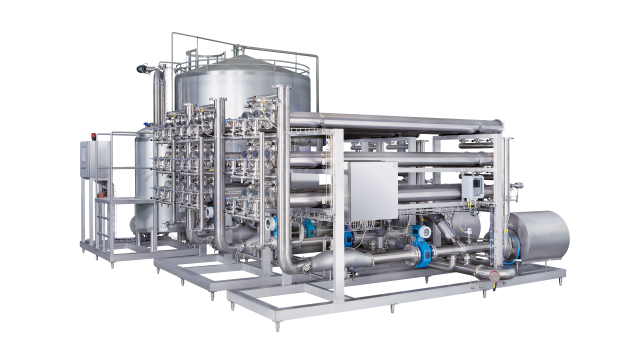Membrane filtration systems
Alfa Laval designs, manufactures and installs complete cross-flow membrane filtration systems, based on polymeric membranes. Our production units are based on either the unique plate-and-frame modules or on spiral elements of varying sizes. For some applications, a combination of both types can be used to give the best possible solution
Extensive experience and complete membrane filtration system range
- Lower overall production costs
- High end product quality
- Customized design
- Customized design
- 24-hour service programme
Alfa Laval offers a complete range of cross-flow membrane filtration solutions and in-house membrane manufacture. Our experience in microfiltration, ultrafiltration, nanofiltration and reverse osmosis dates back as far as the mid-sixties, soon after membrane filtration was introduced on a commercial scale.
The extensive Alfa Laval portfolio of membrane filtration equipment includes high performance polymeric membranes, sanitary modules, components, laboratory test units, pilot plants and fully engineered membrane production units.
Our membrane filtration solutions, when used in industrial-scale applications where reliability, consistency and operating costs are crucial considerations, offer significant advantages.
How does membrane filtration work
Physical separation
Membrane filtration is a physical separation process in which the driving force is the difference in pressure between the two sides of a special membrane. This process is characterized by the ability to separate molecules of different sizes and characteristics.
Almost all industrial membrane filtration is carried out as cross-flow filtration, where the liquid being filtered flows parallel to the membrane at high velocity and under pressure.
Physical barrier
In its most basic terms, membrane filtration involves passing a single feed stream through a membrane system that separates it into two individual streams, known as the permeate and the retentate. The membrane that separates them is a physical barrier with highly specialized characteristics - a barrier that only certain selected components in the feed stream can pass through.
Passing through
The pores of such membrane material are so small that they are measured in Angstrom (10-10 m), and pressure is required to force the liquid through them. In fact, the pores in the membranes used for nanofiltration and reverse osmosis are so small that they cannot be seen even with a scanning electron microscope.
Service
Extending the performance of your equipment
Our dedicated Global Service Network supports you with parts and expertise, wherever you are, whenever you need it. By ensuring greater uptime, availability and optimization, we help bring you peace of mind, and maximize your return on investment. We can work with you to integrate our services into an Alfa Laval Service Agreement for predictable and worry-free operations.
Please contact us with any queries or questions.

